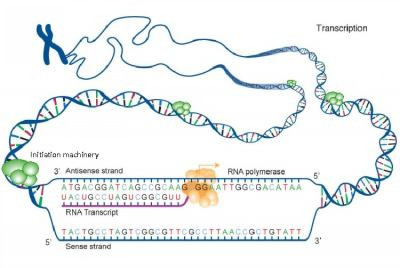Genomic ‘Dark Matter’ Origins Discovered, ‘Not Just Noise Or Junk' [PHOTO]

A pair of scientists may have shed some crucial light on genomic “dark matter.”
Known as non-coding RNA, dark matter makes up 95 percent of the human genome yet it not involved in making proteins. In a new study published in the journal Nature, researchers found that dark matter originates in the same kind of locations as coding RNA along the human genome.
"These non-coding RNAs have been called the 'dark matter' of the genome because, just like the dark matter of the universe, they are massive in terms of coverage -- making up over 95 percent of the human genome. However, they are difficult to detect and no one knows exactly what they all are doing or why they are there," B. Franklin Pugh, holder of the Willaman chair in Molecular Biology at Penn State said. "Now at least we know that they are real, and not just 'noise' or 'junk.' Of course, the next step is to answer the question, 'what, in fact, do they do?'"
Rather than looking directly at RNA as studies have done in the past, the scientists decided to find out where along human chromosomes the first steps of gene expression take place.
The team, comprised of Pugh and postdoctoral scholar Bryan Venters, called this an “initiation machine” – the mechanism that makes RNA which then makes a protein. "We took this approach because so many RNAs are rapidly destroyed soon after they are made, and this makes them hard to detect," Pugh said.
The scientists were stunned to find 160,000 “initiation machines” since humans have only about 30,000 genes in total. "This finding is even more remarkable, given that fewer than 10,000 of these machines actually were found right at the site of genes. Since most genes are turned off in cells, it is understandable why they are typically devoid of the initiation machinery."
The team’s findings may have an impact on medical research. Since complex-disease traits reside in the non-coding region of the genome, researchers may have pinpointed exactly where they reside.
"It is difficult to pin down the source of a disease when the mutation maps to a region of the genome with no known function," Pugh said. "However, if such regions produce RNA then we are one step closer to understanding that disease."
© Copyright IBTimes 2025. All rights reserved.






















